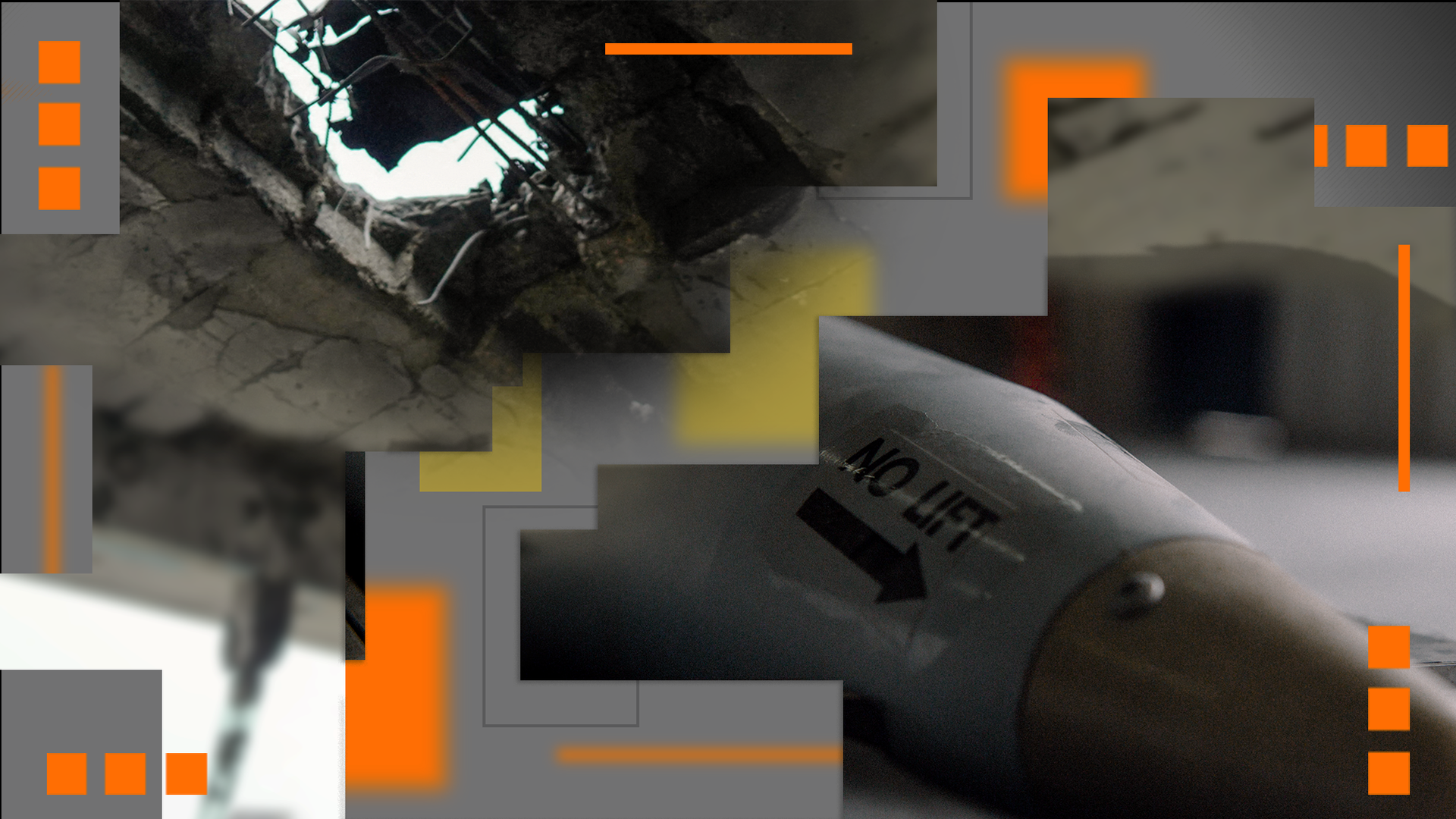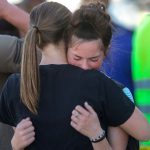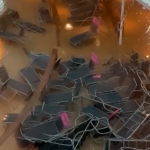Overnight, Israeli forces targeted a school in Nuseirat, a town in the central Gaza Strip.
In a statement given on 6 June, officials at the Hamas-run Gaza Government Media Office said 40 people are confirmed to have been killed.
According to the same officials, 14 of the dead are children. They said a further 23 children were wounded in the strike.
Discussing the strike, an Israeli military spokesperson claimed Hamas fighters were present at the school, and steps had been taken to reduce the risk of civilian casualties.
According to experts, a fragment visible in a video verified by Sky News can be identified as part of an American-made GBU-39 Small Diameter Bomb (SDB).
The location of the strike
Sky News verified the location of this strike by matching video taken in the aftermath to satellite imagery.
West Yorkshire Police officer given community order over pro-Hamas WhatsApp posts
Gaza ceasefire: Joe Biden taking big gamble – but it’s the best chance yet at ending Israel-Hamas war
Gaza ceasefire: Don’t ‘lose this moment’, Biden says as he unveils Israeli proposal to Hamas to end war
The location was reported by those with knowledge of the area as being a school in Nuseirat. Visible features, including a raised roof section allowed Sky News to determine the precise location within the area.
The specific building hit is in the south of a large complex housing school buildings. Satellite imagery captured by Planet on 24 and 28 May shows it lies less than 100 meters from an area occupied by tents.
Weapon fragment visible in footage
In a video posted to Instagram shortly after the attack, pieces of a munition can be seen on the floor surrounded by debris.
Sky News matched this section of video to the scene by comparing a hole in the ceiling to a photograph captured in the daytime following the strike.
The presence of a distinctive orange and white building visible in the background of the reference photograph confirms it was taken in the building identified by Sky News.
Identifying the weapon used
Rahul Udoshi, a weapons specialist at the defence intelligence company Janes, said both the appearance of the object and the damage seen in the video point to it being a “GBU-39 SDB nose cone.”
Former US Army explosive ordnance disposal technician Trevor Ball also concluded the fragment was from a GBU-39, telling Sky News, the bomb “has a very distinct solid nose section of the bomb body that gives the munition its capability to penetrate concrete structures”.
Ball confirmed the damage visible at the scene was consistent with the use of this weapon.
The GBU-39 is a guided glide bomb deployed by aircraft. GPS-assisted, it is designed to facilitate precise, targeted attacks.
Made in America
The GBU-39 SDB has recently been the subject of controversy, having been identified by Sky News and others as the munition used in a strike that killed dozens in Rafah.
As was reported at the time, the GBU-39 is manufactured in the United States. According to Sipri Arms Transfers Database,1,000 were sent to Israel in late 2023.
The delivery was expedited by Boeing following the 7 October attack and the bombs were flown to Israel from a US airbase, Bloomberg reported.
False claims concerning supposed Indian origin go viral
The day after this strike, a video showing a piece of metal went viral on social media sites, with users claiming it proved a weapon from India was used.
While the object in question has the word “INDIA” clearly stamped on it, it is not part of a munition.
A search of the text visible on the object led Sky News to an eBay listing. Sold in lots of six for $10.49 each, they are described as “Screw In Bell Box Hole Plugs”. There is no record of them being used as a component in military hardware.
An expert consulted by Sky News confirmed that it does not resemble part of a munition.
The Data and Forensics team is a multi-skilled unit dedicated to providing transparent journalism from Sky News. We gather, analyse and visualise data to tell data-driven stories. We combine traditional reporting skills with advanced analysis of satellite images, social media and other open source information. Through multimedia storytelling we aim to better explain the world while also showing how our journalism is done.






















